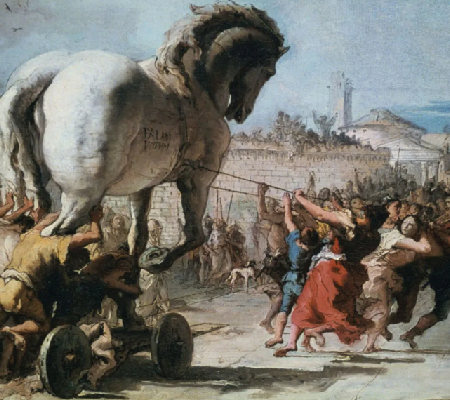The price of a visionary woman’s dream

She pleaded with them not to haul that giant wooden horse into Troy. Casandra knew it would be a disaster — and told anyone who would listen that it was the wrong response to the apparent gift left behind by a supposedly departed foe. The relieved populace insisted the gift was meant to appease the gods for threatening their city. Cassandra warned, but her predictions of doom were ignored. And that was inevitable because the curse of Cassandra was to possess foresight and vision that no one would credit — until it was too late.
Women like Cassandra, who step outside the bounds to define how things are or should be, innovate, create, and lead—such women throughout history and today often encounter passive resistance or outright oppression from society, or mostly from men. Visionary women have paid a heavy price for their intelligence, vision, and ambition in science, literature, politics, activism, and other fields.
Ada Lovelace (1815–1852), the first computer programmer, predicted that machines would one day manipulate symbols of all sorts—not just number systems. Meanwhile, her pioneering work on an early computer — Charles Babbage’s Analytical Engine, the first mechanical computer — would later inspire generations of computer scientists. Still, her contributions fell into relative obscurity for the next century. At Lovelace’s time in history, women held an intellectually lower status, and their insights were dismissed. It wasn’t until the 20th century that her work was rediscovered, symbolising how societal biases can suppress female innovation.
Marie Curie (1867–1934) was awarded two Nobel Prizes in physics and chemistry, but because she was a woman, she was never admitted to the French Academy of Sciences. Her American discoveries about radioactivity revolutionised science, but the backlash against her was enormous.
In 1911, a month after her husband Pierre Curie died, Marie was crucified in the press over her relationship with the physicist Paul Langevin. Scandal eclipsed her genius, something that many innovative women still endure today.
Hedy Lamarr (1914-2000) was a glamorous Hollywood star. Few, though, realised she was also a groundbreaking inventor who co-invented the essential frequency-hopping technology, which was a precursor to today’s Wi-Fi. Since she was treated as more of a glamorous actress, people ignored her accomplishments in her lifetime.
Even in her later years, she was begrudgingly recognised for her work in the tech field. Lamarre’s story illustrates how societal perceptions of women can prevent their intelligence from being treated seriously.
Rosa Parks (1913–2005) is most famous for sparking the Montgomery Bus Boycott, but her defiance exacted a heavy toll on her. Because of her opposition to racial segregation, she lost her job, received death threats, and faced years of economic hardship. Parks was a tired seamstress and a seasoned activist who had intentionally sought to challenge injustice. Her courage helped change the arc of civil rights in this country, and the reality is that so many visionary acts of courage come at a cost.
Katherine Johnson a NASA mathematician, was part of the team that calculated trajectories for space missions, including one in which John Glenn orbited Earth. Not only did she face racial and gender bias, but she also worked in segregated offices. It took decades for her story to be revived, a case study of how even institutions have been glacial when recognising women’s accomplishments. She was also brilliantly portrayed in the movie Hidde Figures.
The tales of Lovelace, Curie, Lamarr, Parks and Johnson are reminders that female innovation has often come to a price. The outrageous situation in Afghanistan, where women are literally losing their voices as promulgated by a bunch of cruel and thoughtless rulers, shows how, even today, some women are not allowed to be heard. Malala Yousafzai, a Nobel Prize-winning activist, has championed girls’ education worldwide despite facing an assassination attempt by the Taliban. Her courage and advocacy have led to global policy changes and increased funding for girls’ education, showing that today’s society is more willing to support female trailblazers.
Many visionary women today are gaining greater recognition, respect, and opportunities.
See also: Unforgettable Chapters in Malala Yousafzai’s Extraordinary Journey. https://julienflorkin.com/personalities/malala-yousafzai/
Ada Lovelace and Heddy Lemar are only some of the extraordinary women profiled in my new book — Conversations With Remarkable Women — on sale now at Amazon.
Visit andrewsbooks.site and feel free to email me with your thoughts about visionary women at andrewsbooks@btinternet.comc:\users\andrew\desktop\blogs for andrewsbooks.site\05 visionary women.docx
